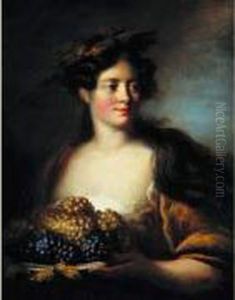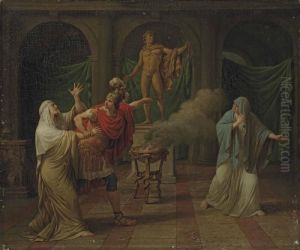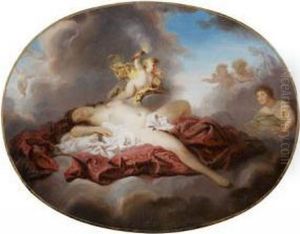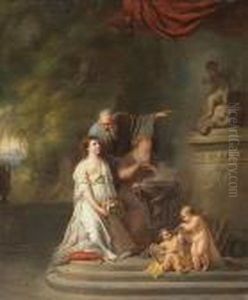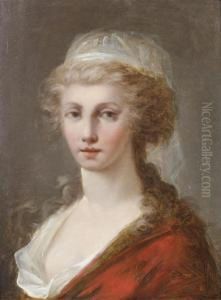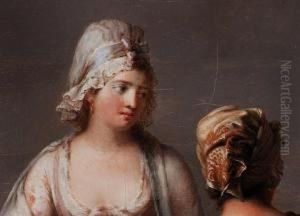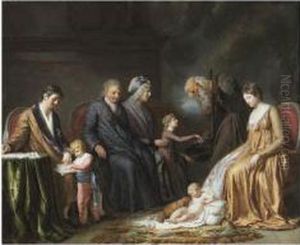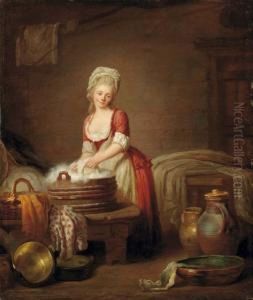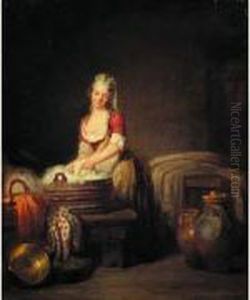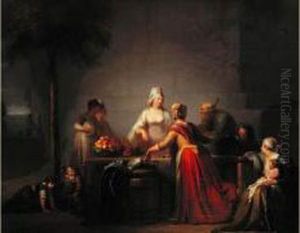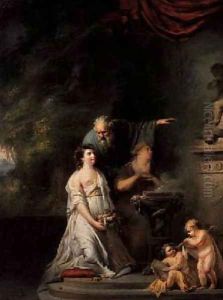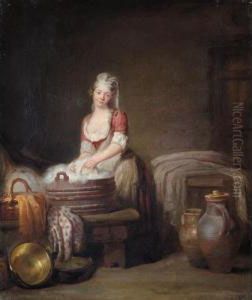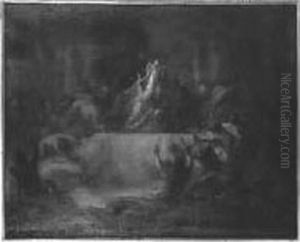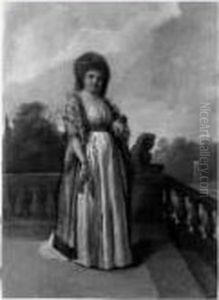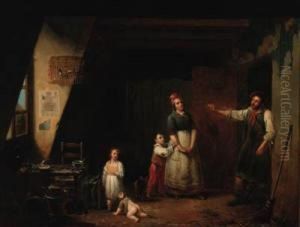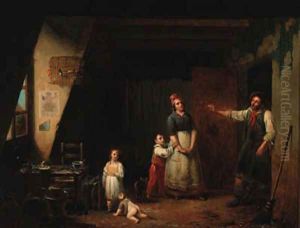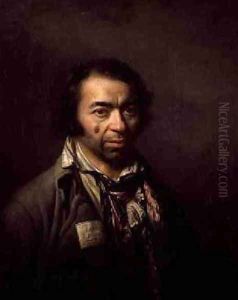Pierre Nicolas Legrand Paintings
Pierre Nicolas Legrand was a French artist born on March 4, 1758, in Paris. He was primarily known as a draftsman and an engraver, with his works reflecting the turbulent times of the French Revolution and the Napoleonic era. His artistic education began under the tutelage of the French engraver and painter Jean-Baptiste Le Prince, who was well-regarded for his etchings and aquatints.
Legrand's early works were influenced by his master's style, which combined the Rococo elegance with a sense of naturalism. However, as his career progressed, Legrand developed a more distinct style characterized by its sharpness of line and clear moral narratives, often commenting on the social and political issues of his time.
During the French Revolution, Legrand's work took on a more political tone, reflecting the complex societal changes occurring around him. He produced a number of allegorical prints and drawings that depicted the ideals and events of the Revolution. His work from this period is noted for its detailed and satirical nature, which provided a unique window into the sentiments of the era.
After the fall of Napoleon, Legrand's style once again shifted as he adapted to the changing political landscape. He continued to work and exhibit his art throughout his life, although he never achieved the same level of fame as some of his contemporaries. Despite this, his body of work provides valuable insights into the artistic movements of the late 18th and early 19th centuries in France.
Legrand remained relatively active in the French art scene until his death on December 2, 1829, in Paris. While not as widely celebrated as some of his peers, Legrand's engravings and drawings are appreciated by art historians for their technical skill and historical significance. His works can be found in various art collections, including the Bibliothèque nationale de France, where they continue to be studied and admired.
